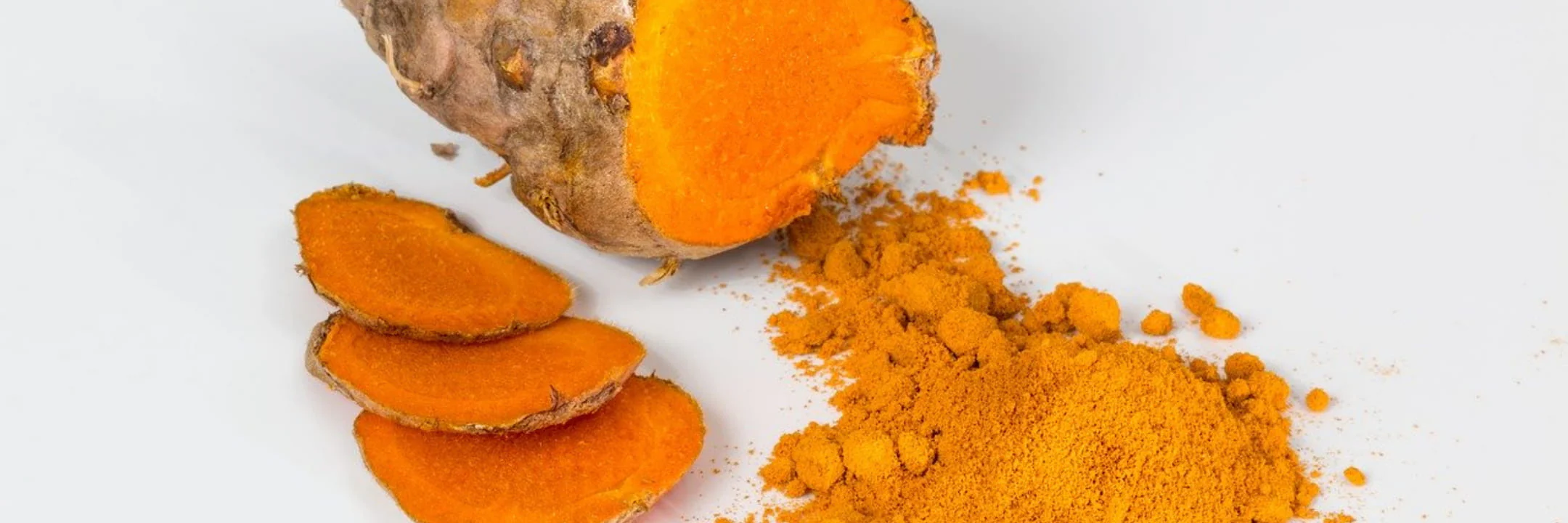
Summary of Contents
Introduction to Lakadong Turmeric
Lakadong turmeric is a rare and highly prized variety of turmeric, famous for its vibrant color and incredibly high curcumin content—around 7-12%, compared to the 2-3% found in regular turmeric. This makes Lakadong turmeric a powerful superfood, packed with health benefits that far surpass standard turmeric. Its unique properties have earned it recognition not only in kitchens but also in the wellness industry, where it is valued for its medicinal uses.
Geographical Origin
Lakadong turmeric is exclusively grown in the Jaintia Hills of Meghalaya, a remote area in Northeast India. The region’s altitude, fertile soil, and high rainfall create the perfect conditions for this crop, producing a superior turmeric variety that has gained both national and international acclaim.
Why It’s Special
What sets Lakadong turmeric apart is its rich golden-yellow color, intense aroma, and powerful medicinal qualities. Thanks to its exceptionally high curcumin levels, it has become a favorite for those seeking natural remedies for inflammation, digestion, and overall well-being. Its quality is so distinctive that it’s now a staple in organic and health-conscious markets worldwide.
History and Tradition
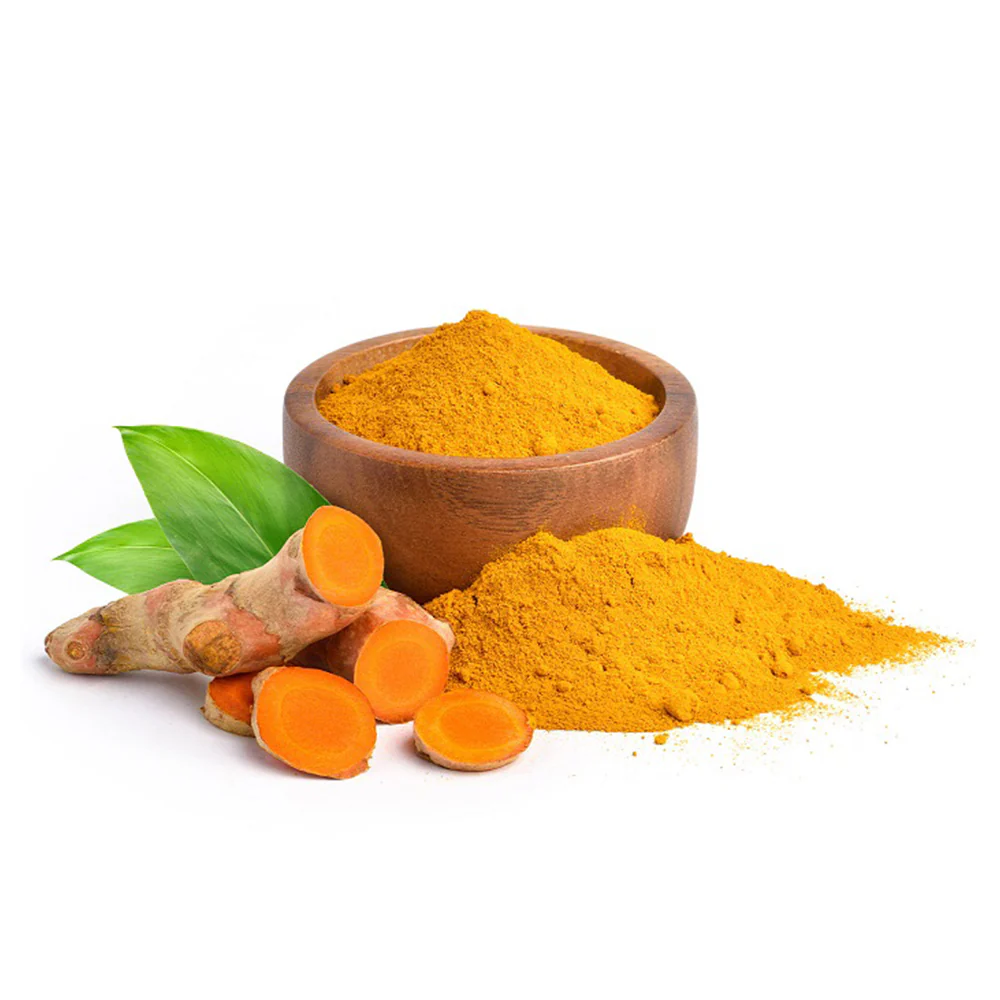
Cultural and Medicinal Significance
Turmeric has been an integral part of Northeast Indian culture for centuries, particularly in Meghalaya, where it’s not just a spice but also a revered medicinal herb. Traditionally, it has been used in Ayurveda and local medicine to treat ailments like joint pain, digestive issues, and skin problems. It is a key ingredient in rituals, ceremonies, and healing practices in the region.
Generational Use
For generations, the local communities of Meghalaya have relied on Lakadong turmeric for its healing properties, adding it to their daily lives in everything from food to medicinal concoctions. Whether it’s to soothe an upset stomach or boost immunity, Lakadong turmeric has held a central place in the lives of the people in the Jaintia Hills.
The Unique Growing Conditions
The Jaintia Hills of Meghalaya offer the perfect setting for cultivating Lakadong turmeric. The region enjoys high-altitude, heavy monsoonal rains, and fertile, well-draining soils, all of which contribute to the plant’s rich curcumin content and vibrant hue. These natural conditions are nearly impossible to replicate elsewhere, making Lakadong turmeric a truly unique crop.
Organic Farming Practices
Farmers in the Jaintia Hills mostly follow traditional organic farming methods, avoiding synthetic fertilizers and pesticides. This not only enhances the quality of the turmeric but also ensures that the land remains healthy and productive for future generations. The turmeric is grown in harmony with the environment, adhering to organic and eco-friendly principles that prioritize sustainability.
Health Benefits of Lakadong Turmeric
The high curcumin levels in Lakadong turmeric are what make it so valuable. Curcumin is known for its anti-inflammatory and antioxidant properties, helping to boost the immune system, reduce chronic inflammation, and fight free radicals that cause cellular damage.
Health Benefits
Lakadong turmeric is celebrated for a wide range of health benefits, including:
- Improved Digestion: Aids in the breakdown of food and relieves bloating.
- Joint Pain Relief: Reduces inflammation in conditions like arthritis.
- Skincare: Enhances complexion and helps heal acne and other skin conditions.
- Brain Health: May improve memory and reduce the risk of neurodegenerative diseases.
- Chronic Disease Prevention: Plays a role in preventing heart disease, diabetes, and certain cancers due to its potent anti-inflammatory effects.
- Image Alt Text: “Freshly ground Lakadong turmeric powder, rich in curcumin, used for its numerous health benefits.”
Economic Importance to Meghalaya
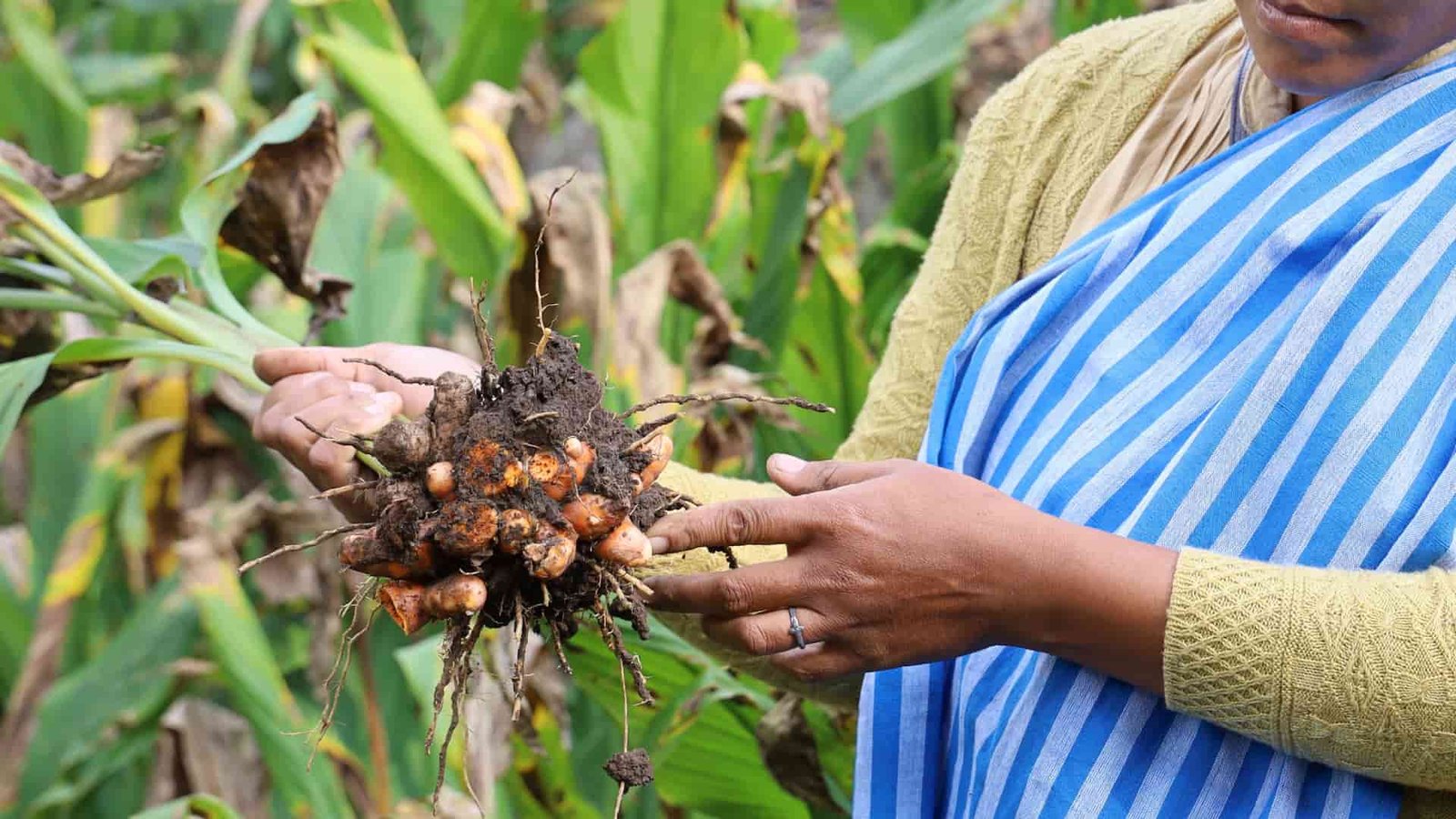
Impact on Local Farmers
Lakadong turmeric cultivation has become a major source of livelihood for small-scale farmers in the Jaintia Hills. The high value of this crop, coupled with increasing demand for organic turmeric, has significantly boosted the local economy. By cultivating Lakadong turmeric, farmers can earn higher profits than they would with traditional crops, improving their quality of life.
Lakadong as a Global Export
The demand for Lakadong turmeric is rapidly growing, particularly in international markets that prioritize organic and health-conscious products. Countries like the United States, Europe, and Japan are increasingly importing Lakadong turmeric for its medicinal uses, which is driving further growth in the export sector.
Success Stories
Farmers’ cooperatives and individual farmers have found success through the cultivation and marketing of Lakadong turmeric. Many have improved their standard of living by tapping into the global demand for this high-quality spice, ensuring that their traditional methods of cultivation are recognized and rewarded.
Challenges Faced by Farmers
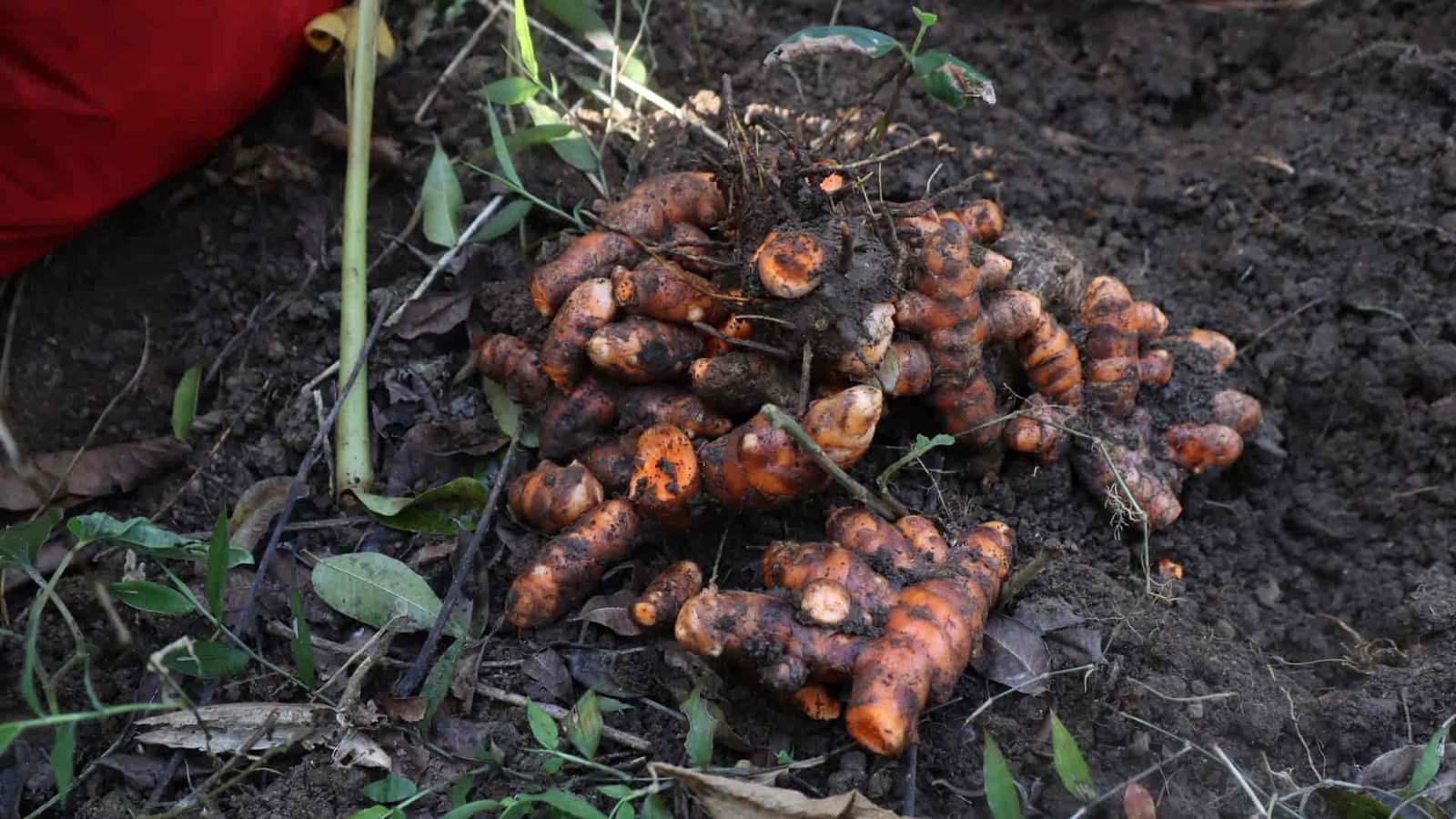
Market Accessibility
Despite its high quality, many farmers face challenges in reaching larger markets due to geographical isolation and lack of infrastructure. Competing with larger turmeric producers from other regions adds another layer of difficulty, as these producers often have access to better technology and distribution channels.
Infrastructure and Resources
Farmers in the Jaintia Hills often lack the resources to properly process and package their turmeric for export. Without advanced packaging and processing facilities, much of the turmeric is sold raw, limiting its market potential and reducing profitability.
Government and NGO Support
Efforts from the government and NGOs are helping farmers by providing market linkages and encouraging organic certification. These initiatives aim to open up better opportunities for farmers, ensuring they get fair prices for their high-quality produce.
Lakadong Turmeric in Everyday Life
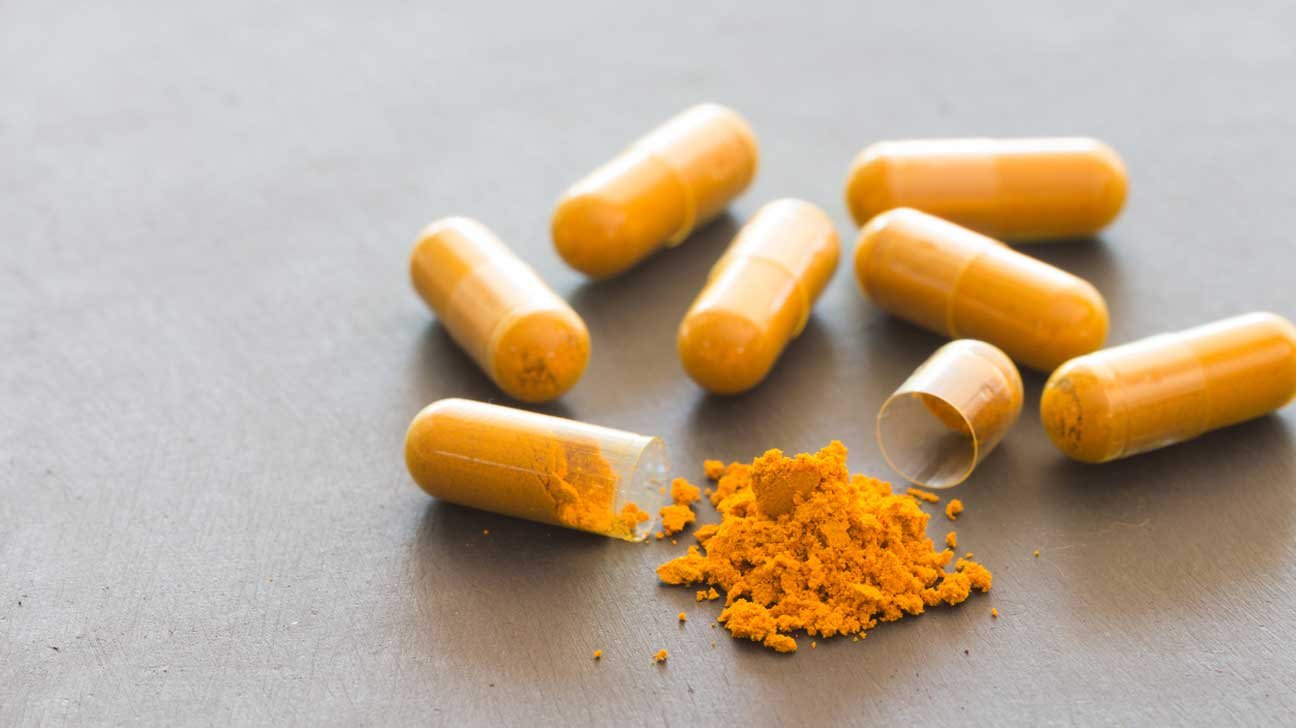
How to Use Lakadong Turmeric
Lakadong turmeric can easily be incorporated into everyday meals. It’s perfect for curries, soups, smoothies, and even the popular golden milk (turmeric latte). Its vibrant color and strong flavor make it a fantastic addition to both savory and sweet dishes.
Beyond the kitchen, Lakadong turmeric is commonly used in natural beauty products. It’s a popular ingredient in face masks for glowing skin and is often added to homemade remedies for treating minor ailments like colds or sore throats.
Value-Added Products
Lakadong turmeric’s versatility has led to a wide range of value-added products that capitalize on its health benefits and high curcumin content. These products include:
- Turmeric Capsules: Used as a dietary supplement for its anti-inflammatory and antioxidant properties.
- Turmeric Powder: Sold in its pure form, used for cooking and medicinal purposes.
- Turmeric Oil: Extracted and used in aromatherapy, skincare, and wellness products.
- Curcumin Extract: Concentrated curcumin used in supplements, pharmaceuticals, and cosmetics.
These products have found significant success in both local and international markets, catering to the growing demand for natural health supplements.
Sustainability and Future Prospects
Lakadong turmeric is grown using sustainable farming methods that ensure the long-term health of the soil and environment. Farmers use organic composting, crop rotation, and natural pest control methods to cultivate this turmeric. These practices not only protect the environment but also improve soil fertility, ensuring that future generations can continue to farm the land effectively.
- Organic Mulching: Helps retain moisture in the soil and prevents weed growth.
- Crop Rotation: Reduces soil depletion and keeps the land fertile.
- Natural Pest Control: Using biopesticides or companion planting to keep pests away without harmful chemicals.
The Future of Lakadong Turmeric
The future looks bright for Lakadong turmeric. As demand for organic spices continues to rise, particularly in health-conscious markets, there are ample opportunities for expanding cultivation and export. The global market for curcumin-based products is growing, and Lakadong turmeric’s high curcumin content positions it as a premium product in this sector.
Conclusion
By choosing Lakadong turmeric, you’re not only adding a health-boosting spice to your kitchen but also supporting the sustainable livelihoods of farmers in Meghalaya. Your choice helps maintain eco-friendly farming practices and ensures the continued cultivation of this special variety of turmeric.
With its numerous health benefits and positive environmental impact, Lakadong turmeric is an excellent addition to any lifestyle. By buying authentic, organic Lakadong turmeric, you contribute to a healthier world—both for yourself and for the farmers who grow it.
Lakadong turmeric is just one of the many unique organic crops from Northeast India. The region also grows exceptional varieties like black rice, ginger, and bamboo shoots, each offering its own health benefits and supporting the local economy. By exploring these crops, you can enjoy nutritious, sustainably grown foods while helping Northeast Indian farmers thrive.
FAQ Section
Q: What is special about Lakadong turmeric?
A: Lakadong turmeric is special because of its exceptionally high curcumin content, ranging from 7-12%, compared to regular turmeric’s 2-3%. This makes it a powerful natural anti-inflammatory and antioxidant with vibrant color, potent aroma, and strong medicinal properties.
Q: How to identify Lakadong turmeric?
A: You can identify Lakadong turmeric by its deep golden-yellow color, intense aroma, and its label indicating a curcumin content of 7% or more. It’s typically richer in color and flavor compared to regular turmeric.
Q: In which state is Lakadong turmeric found?
A: Lakadong turmeric is found in Meghalaya, particularly in the Jaintia Hills region, which offers the ideal high-altitude, fertile soil, and heavy rainfall for cultivating this unique variety.
Q: What is the price of Lakadong turmeric in India?
A: The price of Lakadong turmeric varies, but it typically ranges from ₹300 to ₹600 per kilogram in India, depending on factors such as quality, certification, and demand.
Q: How to use Lakadong turmeric?
A: Lakadong turmeric can be used in cooking (curries, soups, smoothies), golden milk (turmeric lattes), and natural beauty products (face masks). It’s also a key ingredient in homemade remedies for treating ailments like colds and sore throats.
Q: Is Lakadong turmeric better than other turmeric?
A: Yes, Lakadong turmeric is considered superior due to its high curcumin content (7-12%), which makes it more potent in terms of its anti-inflammatory, antioxidant, and medicinal properties compared to regular turmeric, which has only 2-3% curcumin.
